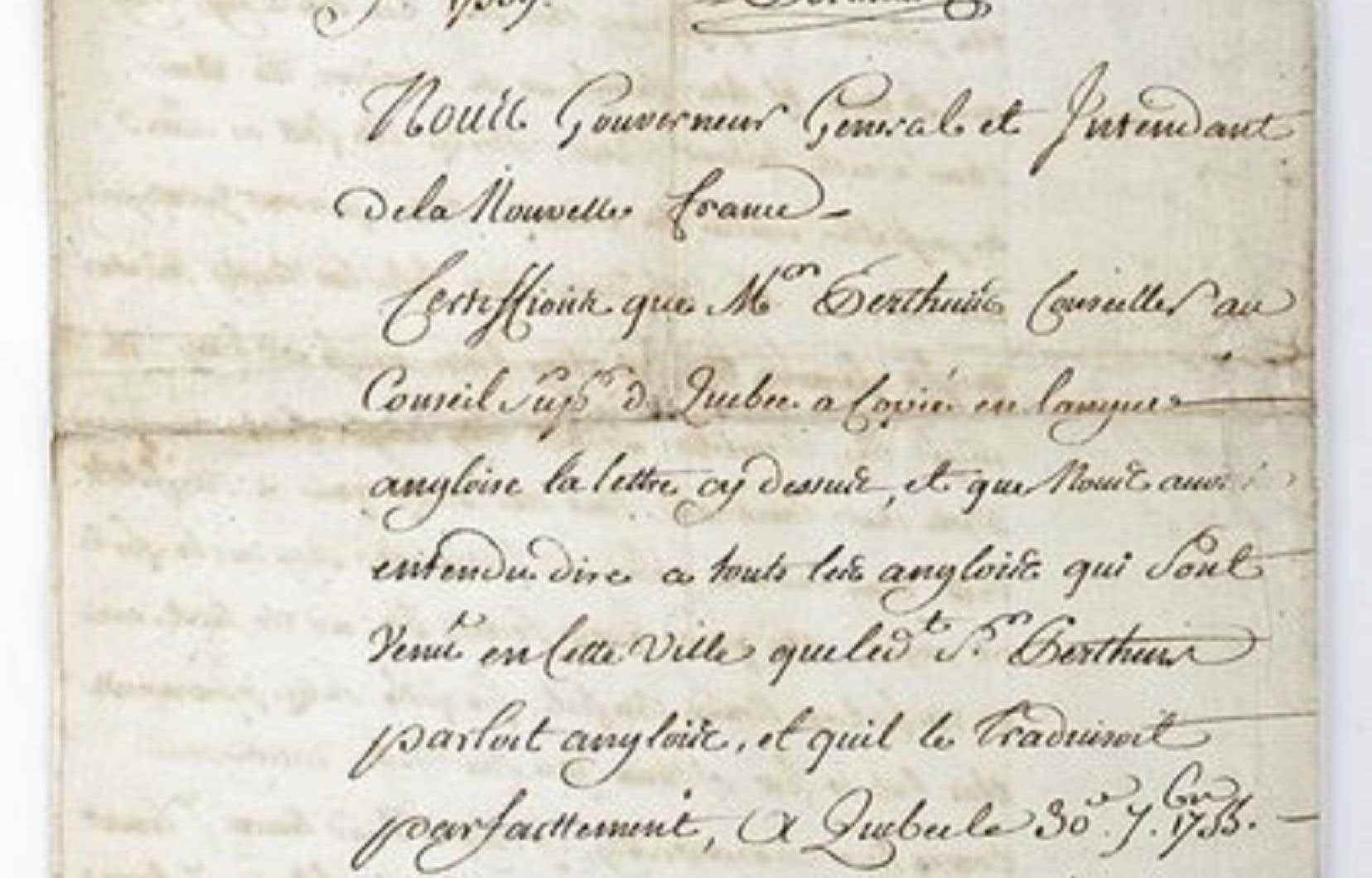A rare document from the time of New France which gives an account of the Seven Years’ War was announced again in an auction to be held in Montreal on February 8 under the aegis of the Iegor house.
This is a letter from Robert Stobo, one of the privileged witnesses to the outbreak of the Seven Years’ War (1756-1763) which led to the fall of New France in the wake of the Battle of the Plains of Abraham. The special status of this officer of Scottish origin testifies to the confusion surrounding the beginnings of this world conflict. This war is being played out not only in North America, but also in Europe, India and the West Indies.
The handwritten document was eventually removed from the sale catalog. “There was no question of putting it back on sale. This document was already announced during a previous sale. It was not sold. And the seller took it back,” explains Martine de Saint-Hippolyte. The period document had been withdrawn for the first time, for lack of having reached its reserve price. The document was estimated to be worth between $20,000 and $30,000.
Washington men
In 1754, Stobo served as an engineer in a detachment of militia from Virginia patrolling the edge of the French and British colonial empires. On July 3, the troop obeys the orders of Colonel George Washington, the future American president. These fighters were captured within the walls of Fort Necessity by a French army commanded by Captain Louis Coulon de Villiers, a Canadian native of Verchères.
By laying down their arms, Washington’s men obtained a pass to Virginia. The terms of their capitulation are guaranteed by the handing over of “hostages” to the victors, ie captains Jacob Van Braam and Robert Stobo. The two captives are brought to Fort Duquesne, in what will become the city of Pittsburgh after the British conquest.
Stobo took advantage of his stay in this outpost of New France to draw a detailed plan of 36 by 21 centimeters indicating the weak points of the fortified enclosure. This document, dated July 28, 1754, is accompanied by a letter to the Virginia governor, Robert Dinwiddie. Stobo hands it all over to Delaware warrior Shingas. He hastens to cross the Appalachians to deliver his precious package to the British authorities.
The plan signed by Stobo was found the following summer, only a few kilometers from Fort Duquesne, among the bloody papers of British General Edward Braddock. Braddock’s army was crushed by a Franco-Aboriginal detachment in the battle of Monongahela on July 9, 1755. Robert Stobo was then in Quebec, a thousand kilometers from the battlefield. The hostage circulates freely in the streets of the capital of New France, awaiting an exchange of prisoners which is slow in coming. The discovery of his misdeed leads to his imprisonment for “lèse-majesté”!
It was in this context that Joseph Perthuis, of the Superior Council of New France, made a clean copy of Stobo’s original letter. The document, dated September 30, 1755, is then signed by the governor of the colony, Pierre de Rigaud de Vaudreuil, and by the intendant François Bigot who certify that the transcriber “spoke English and that he translated it perfectly”. One of the duplicates of this letter made its way to the Iegor house. The auction house does not reveal the names of the owners of the objects entrusted to it.
Bibliothèque et Archives Nationales du Québec (BAnQ) did not show any interest in acquiring the document. A copy of the same letter is already in the collection of the National Archives in Montreal. “This letter is part of a file containing several archives on the Stobo affair, including the plan of Fort Duquesne absent from the document put up for sale”, reports BAnQ to the Duty. In addition, the archives of the University of Pittsburgh “also hold a version of the letter with a plan”, indicates BAnQ. This could explain the reluctance of public collections to buy this period document.
Sentenced to be beheaded
Transferred to Montreal, Robert Stobo appeared in October 1756 before a court martial presided over by Vaudreuil himself. The spy, exhausted by the incessant interrogations, confesses in the presence of his compromising letter. He was sentenced to beheading on November 8. However, the unfortunate escaped the executioner’s ax because of the ambiguity of his status as a hostage to a war that had not yet been started when he drew up the plan for Fort Duquesne.
The stay of execution imposed by Versailles allows Stobo to return to his dungeon in Quebec, from which he will escape three times. The last attempt on May 1, 1759, carried out from the embankment of the intendant’s palace, was successful. The adventurer can thus join the British expeditionary force of General James Wolfe who will besiege the capital from the end of June.
In September 1760, Robert Stobo entered Montreal after the general surrender of Canada, which allowed him to see the city where he had been sentenced to death four years earlier! The infantry captain will commit suicide in England ten years later, not without having left an account of his “extraordinary adventures”.
